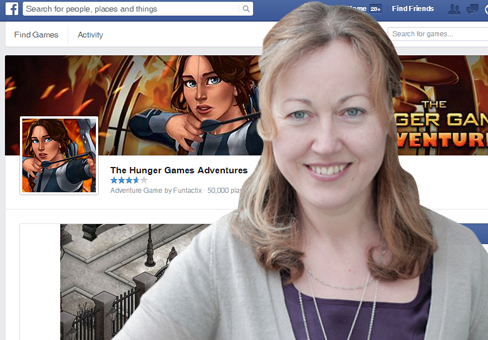Gamification, the route to innovative marketing

 Innovation management expert, Tatiana Schofield, provides a whistle-stop tour of the growth in gamification and the opportunities for marketers. Tatiana is Chair of the Greater London Region Board and Founder and Managing Director of Synergy lab, an innovation management consultancy focusing on university-industry collaboration, innovation management and technology transfer.
Innovation management expert, Tatiana Schofield, provides a whistle-stop tour of the growth in gamification and the opportunities for marketers. Tatiana is Chair of the Greater London Region Board and Founder and Managing Director of Synergy lab, an innovation management consultancy focusing on university-industry collaboration, innovation management and technology transfer.
Wikipedia defines gamification as using game thinking and approaches outside of the game context. Gamification extends into education, training and business, and is becoming mainstream. M2 research predicts that by 2015 businesses will spend $2 billion on gamification services.
Gamification is not a complete novelty. You can probably recall customer loyalty programmes that reward consumers for staying with a brand, like Tesco Clubcard and Costa Coffee Club, cereal boxes prizes like Kellogg’s or employee-of-the-month competitions.
Today, gamification is more sophisticated and exploits social media combined with big data analytics and mobile on-the-go computing.
In order to keep consumers engaged, businesses develop their communication campaigns based on a game-like approach that appeals to people’s intrinsic motivation. Elements include various incentives, voting, ratings, missions, points, scoring, rewards, accomplishments, influence, socialising, collaborative development, community endorsement and online competitions. All of these stimulate the customers' desire to stay in the game.
The new generation of consumers, Millennials, represent an ever greater challenge for marketers wanting to keep their attention. Speed, mobility, virtual and augmented reality, elements of surprise and sensory involvement are elements to be exploited in successful brand communication campaigns.
One of the elements of gamification - immersion - is becoming a growing trend to keep consumers engaged with a brand. For example, the Hunger Games movies have over 3 million Facebook followers, who are role playing as residents of film district. Also, Bloomberg Media created a complete immersive experience at London City Airport allowing customers to experience cyberspace. Or Burberry World's 19th century experience, which the company created at its flagship store at Regent Street, demonstrates immersion techniques.
Over 70% of Forbes Global 2000 companies surveyed in 2013 said they planned to use gamification for the purposes of marketing and customer retention.
In addition to marketing, gamification is also used by businesses as part of their internal marketing and recruitment campaigns. For example, Marriott uses My Marriott Hotel game to tell future employees about the hotel business and staff roles. GE Healthcare uses the Patient Shuffle game to teach healthcare workers about how hospitals operate. Other companies, such as LivingSocial, Spotify and Facebook replaced corporate appraisal systems by instant peer-to-peer feedback using gamification approach.
It’s becoming apparent that applications of gamification are beyond traditional uses and offer brands limitless opportunities, provided they are willing to build strong analytical and technological platforms, in order to embrace this trend.
You can read more from Tatiana on the opportunities for innovation:
The rise of the Innovation Intermediary
Open business models and marketing innovation
Exploring open innovation and marketing
Find out about our two-day training masterclass, Making innovation happen which next takes place at Moor Hall on 28-29 April 2015 and 4-5 August 2015.

